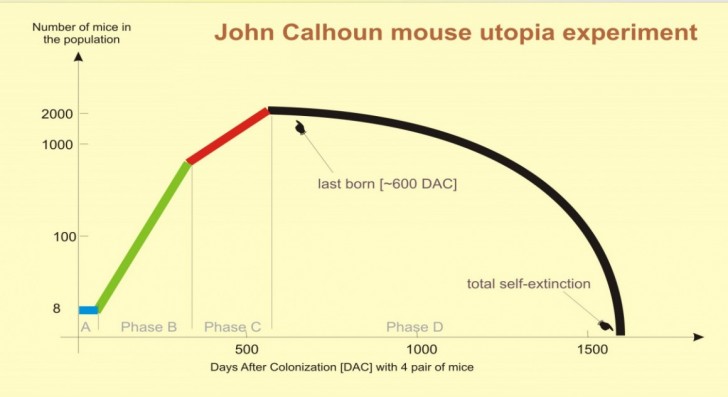mleko
Obiektywistyczny transhumanista
- 44
- 263
W kwestii skandynawskiego socjalizmu warto się zapoznać z Scandinavian Unexceptionalism: Culture, Markets and the Failure of Third-Way Socialism autorstwa Nimy Sanandajiego. Jeszcze nie miałem przyjemności przeczytać całości, ale z tego co przeskrollowałem zapowiada się sroga orka na modelu skandynawskim.
Summary:
- Left-leaning pop stars, politicians, journalists, political commentators and academics have long praised Scandinavian countries for their high levels of welfare provision and for their economic and social outcomes. It is, indeed, true that they are successful by most reasonable measures.
- However, Scandinavia’s success story predated the welfare state. Furthermore, Sweden began to fall behind as the state grew rapidly from the 1960s. Between 1870 and 1936, Sweden enjoyed the highest growth rate in the industrialised world. However, between 1936 and 2008, the growth rate was only 13th out of 28 industrialised nations. Between 1975 and the mid-1990s, Sweden dropped from being the 4th richest nation in the world to the 13th richest nation in the world.
- As late as 1960, tax revenues in the Nordic nations ranged between 25 per cent of GDP in Denmark to 32 per cent in Norway – similar to other developed countries. At the current time, Scandinavian countries are again no longer outliers when it comes to levels of government spending and taxation.
- The third-way radical social democratic era in Scandinavia, much admired by the left, only lasted from the early 1970s to the early 1990s. The rate of business formation during the third-way era was dreadful. In 2004, 38 of the 100 businesses with the highest revenues in Sweden had started as privately owned businesses within the country. Of these firms, just two had been formed after 1970. None of the 100 largest firms ranked by employment were founded within Sweden after 1970. Furthermore, between 1950 and 2000, although the Swedish population grew from 7 million to almost 9 million, net job creation in the private sector was close to zero.
- Scandinavia is often cited as having high life expectancy and good health outcomes in areas such as infant mortality. Again, this predates the expansion of the welfare state. In 1960, Norway had the highest life expectancy in the OECD, followed by Sweden, Iceland and Denmark in third, fourth and fifth positions. By 2005, the gap in life expectancy between Scandinavian countries and both the UK and the US had shrunk considerably. Iceland, with a moderately sized welfare sector, has over time outpaced the four major Scandinavian countries in terms of life expectancy and infant mortality.
- Scandinavia’s more equal societies also developed well before the welfare states expanded. Income inequality reduced dramatically during the last three decades of the 19th century and during the first half of the 20th century. Indeed, most of the shift towards greater equality happened before the introduction of a large public sector and high taxes.
- The development of Scandinavian welfare states has led to a deterioration in social capital. Despite the fact that Nordic nations are characterised by good health, only the Netherlands spends more on incapacity related unemployment than Scandinavian countries. A survey from 2001 showed that 44 per cent believed that it was acceptable to claim sickness benefits if they were dissatisfied with their working environment.
- Other studies have pointed to increases in sickness absence due to sporting events. For instance, absence among men due to sickness increased by 41 per cent during the 2002 football World Cup. These shifts in working norms have also been tracked in the World Value Survey. In the 1981–84 survey, 82 per cent of Swedes agreed with the statement ‘claiming government benefits to which you are not entitled is never justifiable’; in the 2010–14 survey, only 55 per cent of Swedes believed that it was never right to claim benefits to which they were not entitled.
- Another regrettable feature of Scandinavian countries is their difficulty in assimilating immigrants. Unemployment rates of immigrants with low education levels in Anglo-Saxon countries are generally equal to or lower than unemployment rates among natives with a similar educational background, whereas in Scandinavian countries they are much higher. In Scandinavian labour markets, even immigrants with high qualifications can struggle to find suitable employment. Highly educated immigrants in Finland and Sweden have an unemployment rate over 8 percentage points higher than native-born Finns and Swedes of a similar educational background. This compares with very similar employment rates between the two groups in Anglo-Saxon countries.
- The descendants of Scandinavian migrants in the US combine the high living standards of the US with the high levels of equality of Scandinavian countries. Median incomes of Scandinavian descendants are 20 per cent higher than average US incomes. It is true that poverty rates in Scandinavian countries are lower than in the US. However, the poverty rate among descendants of Nordic immigrants in the US today is half the average poverty rate of Americans – this has been a consistent finding for decades. In fact, Scandinavian Americans have lower poverty rates than Scandinavian citizens who have not emigrated. This suggests that pre-existing cultural norms are responsible for the low levels of poverty among Scandinavians rather than Nordic welfare states.
- Many analyses of Scandinavian countries conflate correlation with causality. It is very clear that many of the desirable features of Scandinavian societies, such as low income inequality, low levels of poverty and high levels of economic growth, predated the development of the welfare state. It is equally clear that high levels of trust also predated the era of high government spending and taxation. All these indicators began to deteriorate after the expansion of the Scandinavian welfare states and the increase in taxes necessary to fund it.




